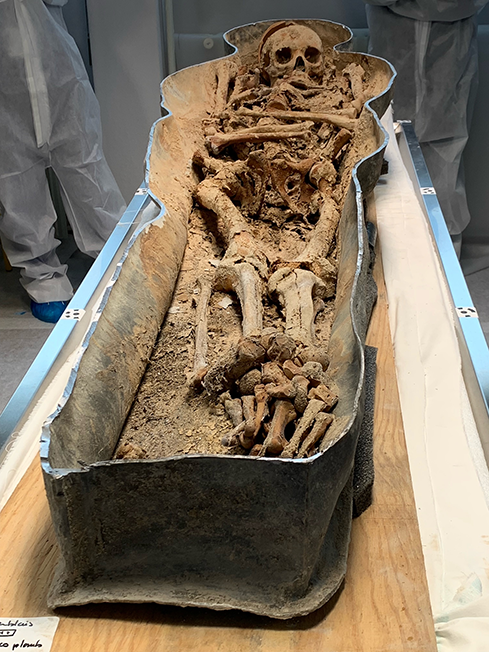Two lead coffins were discovered beneath the floor of Notre Dame Cathedral during a dig by France's national archaeological institute, Inrap, following the fire that nearly destroyed the building in 2019. The contents of the coffins were recently announced. The coffins were discovered earlier this year during a dig by Inrap, but it was only recently announced what was found inside of them.
The fire that almost annihilated the Notre Dame Cathedral in 2019 has directed to the finding of two dreadful lead sarcophagi concealed underneath its foundation. From the ashes and rubble, the team has now brought to light two bodies, stated by the University of Toulouse, aided the laboratory excavation.
According to journalist Kim Willsher from Paris, one is a young nobleman, and the other is an elite priest. A brass plaque component on the priest's sarcophagus affirms the body belongs to a past spiritual superior of Notre Dame, named Antoine de la Porte, who was famished in 1710 at age 83. Since de la Porte supported redeveloping the renowned cathedral, he was quite an esteemed figure in his time. There's even a painting hung off him in the Louvre.
Unraveling Notre Dame Sarcophagus
The owner of the further body is more of a riddle. The anonymous gentleman seems to have died approximately between the ages of 25 to 40, and he was evidently significant given his evident interment. The man found in the other coffin has been nicknamed "Le Cavalier" because his bones suggest that he spent his life on horseback.
A biological anthropologist named Eric Crubézy oversaw the opening of the coffins and reported that the man's body was in poor overall health. Most of his teeth were missing and his bones showed signs of injury. The way his skull was sawed off and his chest opened for embalming was apparently a common practice for burying nobility.
Some aspects of the man's skeleton led Crubézy to suspect that he may have died from chronic meningitis brought on by tuberculosis. He would have had a difficult end of life, according to Crubézy. In death, the body of Le Cavalier had almost become molded into the coffin and no organic tissue was left. He was only sprinkled with the remnants of leaves and flowers that he was buried with. In comparison, the high priest Antoine de la Porte looked much healthier when he died.

Opening of the sarcophagi at the Toulouse forensic medicine laboratory. Sarcophagus found in Notre Dame Cathedral opened, revealing former religious leader and nobleman 'Le Cavalier.'
Shreds of Evidence Seen on Remnants
Even at the age of 83, de la Porte's teeth appear to have been in excellent condition, which was remarkable for his age. This is something that is rarely seen, but it appears that de la Porte took good care of his teeth and cleaned them regularly. The only real sign of illness on de la Porte's body was his big toe, which appeared to have been affected by gout. This is an arthritic disease often associated with royalty who overindulge in meat, seafood, or alcohol.
The researchers at Inrap plan on conducting further analysis of the two bodies to better understand who they were and how they lived. However, as interesting as these individuals may be to scientists and historians, their rights as human beings come first in France.
Under French law, bodies found in coffins are not considered archaeological artifacts; they are human remains and must be treated with respect. The team at Inrap plans on following these rules and when their work with the bodies is complete, they will be laid to rest in a peaceful location once more.
RELATED ARTICLE: Experts to Open Notre Dame Paris Sarcophagus Discovered During Post-Fire Restoration Works
Check out more news and information on Archaeology in Science Times.











!['Cosmic Glitch' in Einstein's Theory of General Relativity Could Be Explained in This New Scientific Tweak [Study]](https://1721181113.rsc.cdn77.org/data/thumbs/full/53435/258/146/50/40/cosmic-glitch-in-einsteins-theory-of-general-relativity-could-be-explained-in-this-new-scientific-tweak-study.jpeg)


